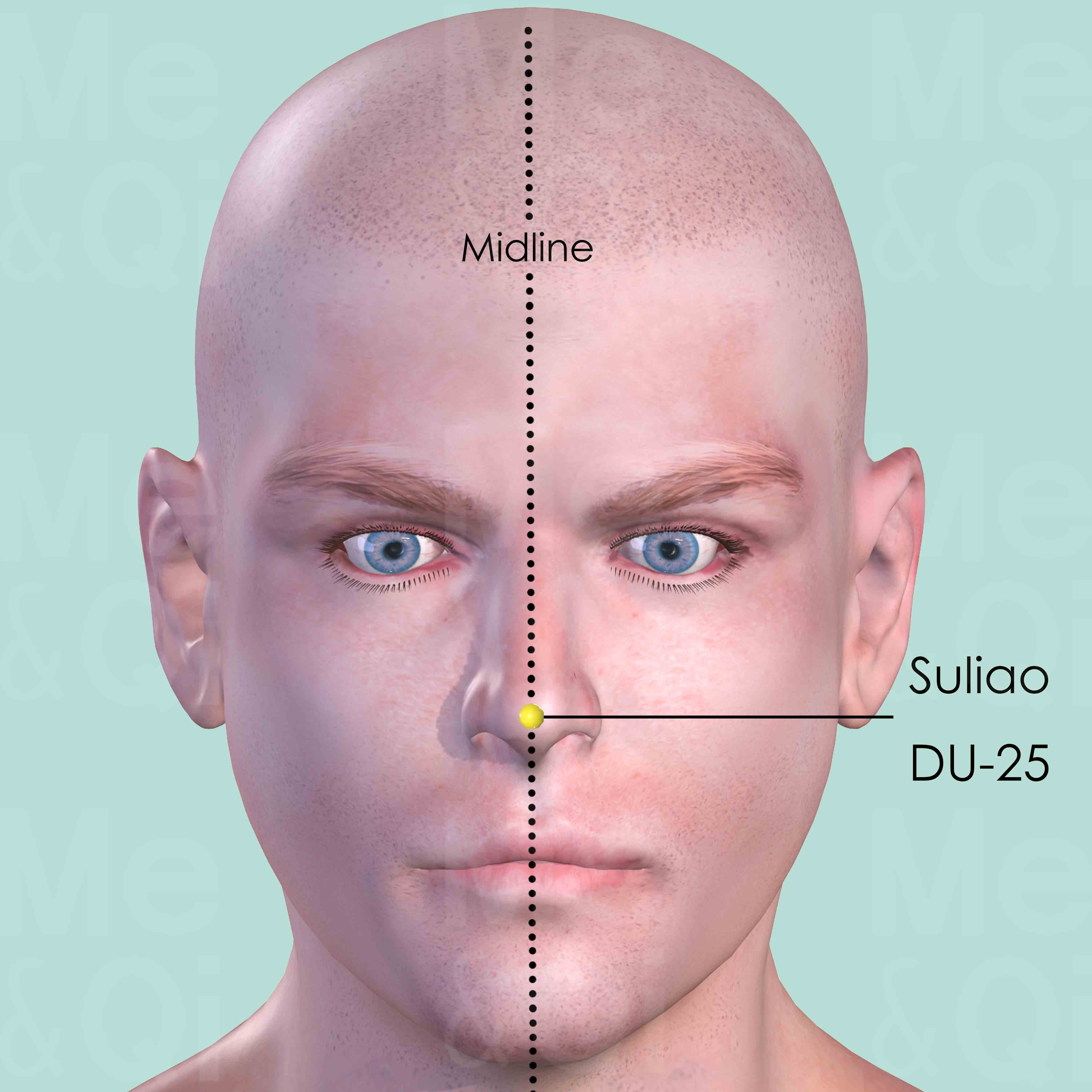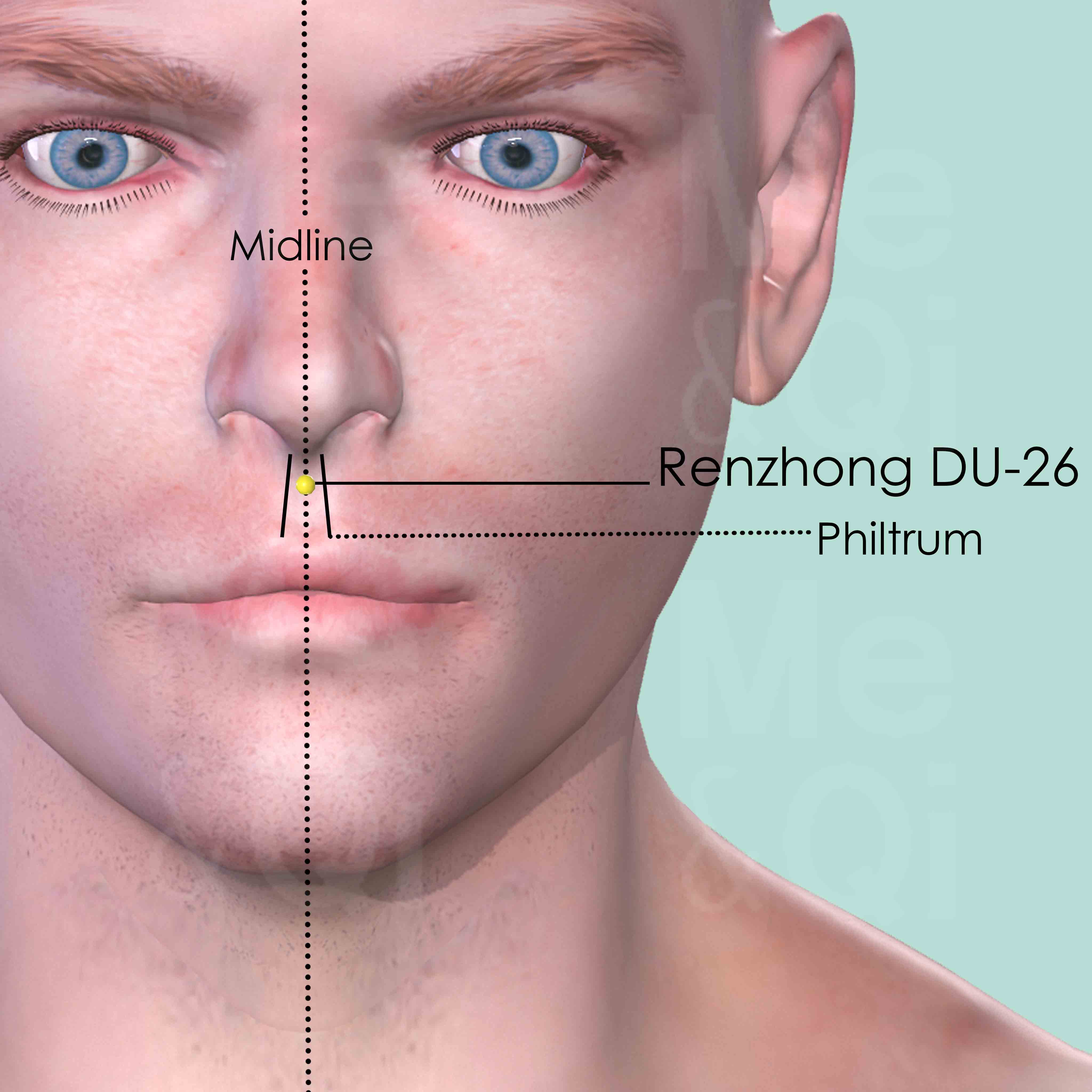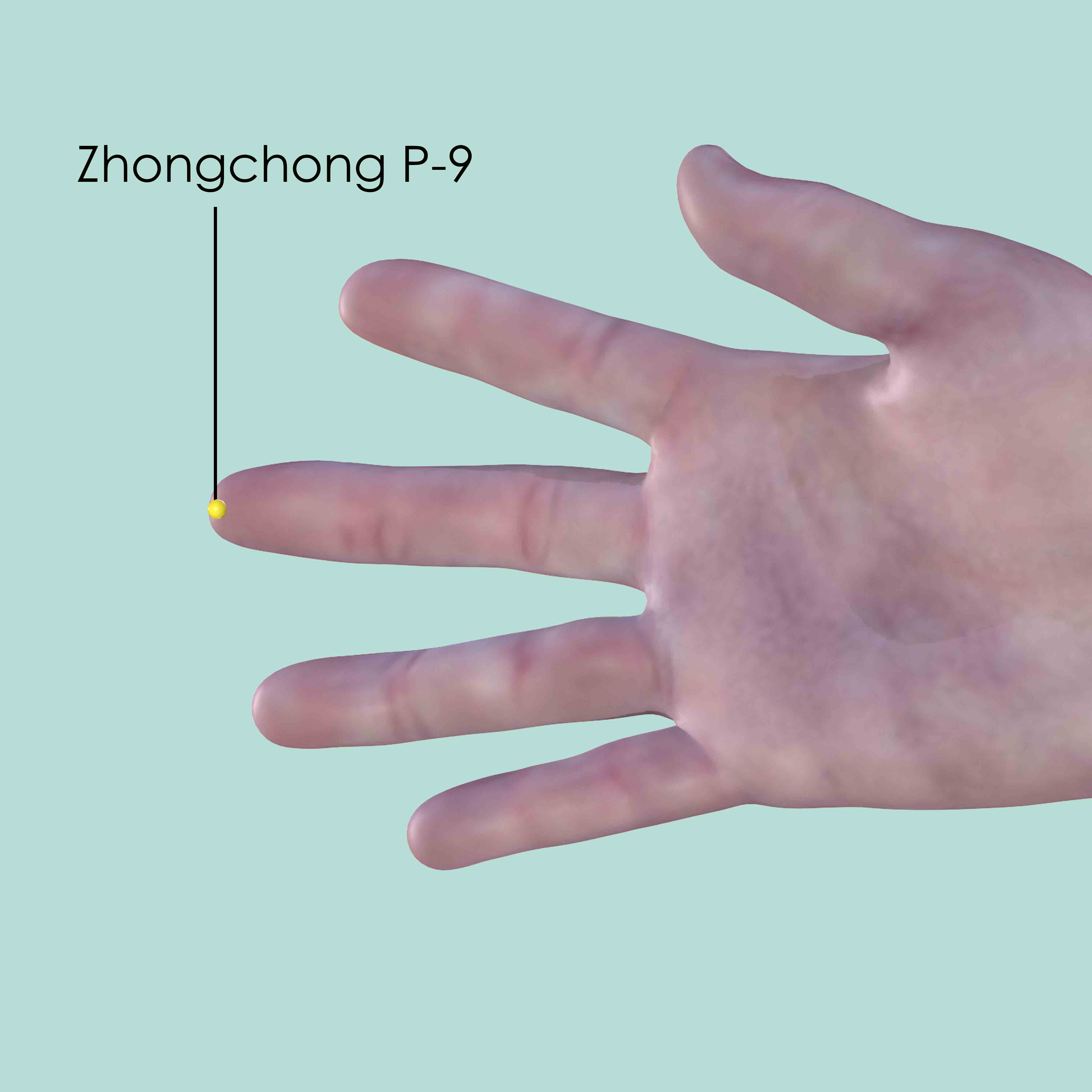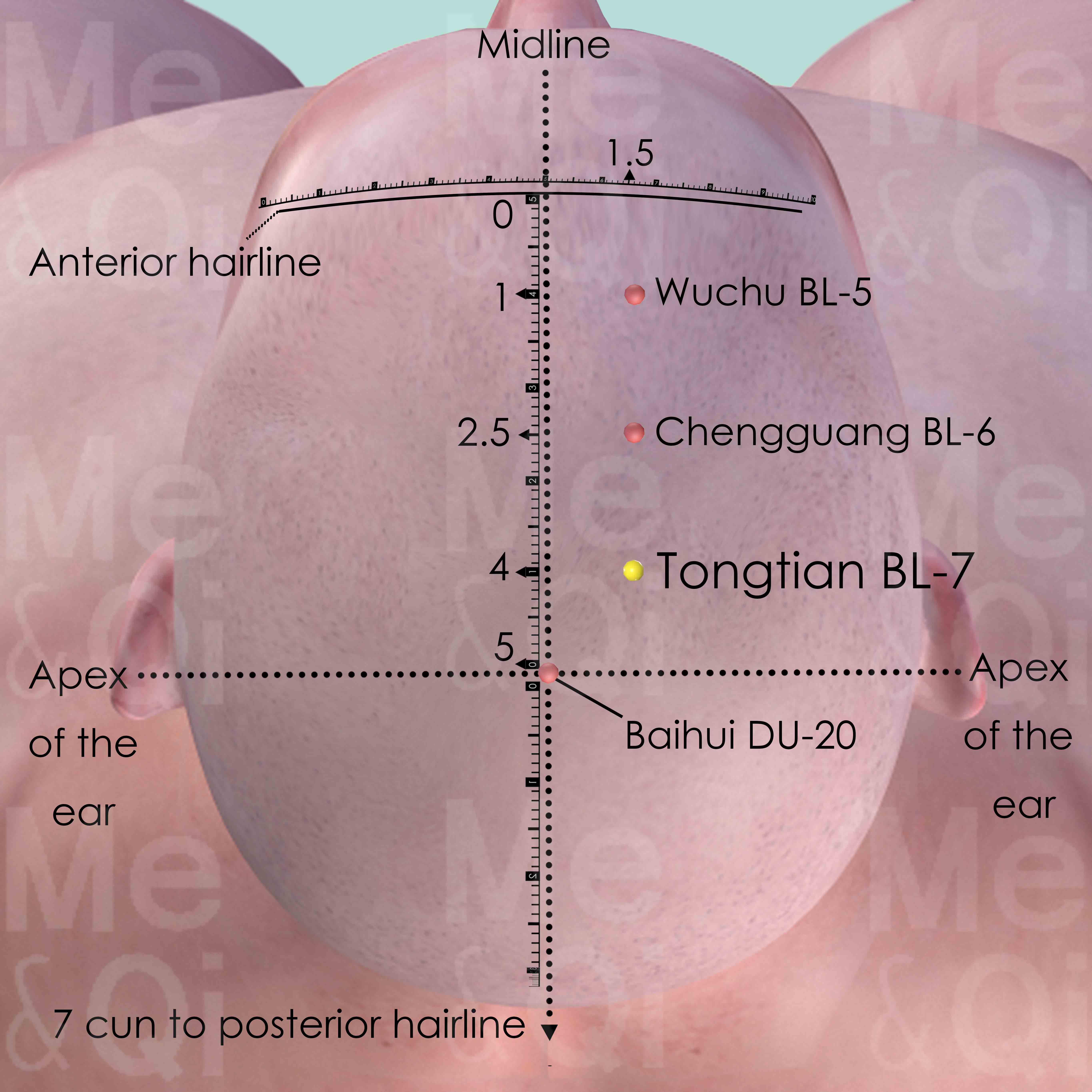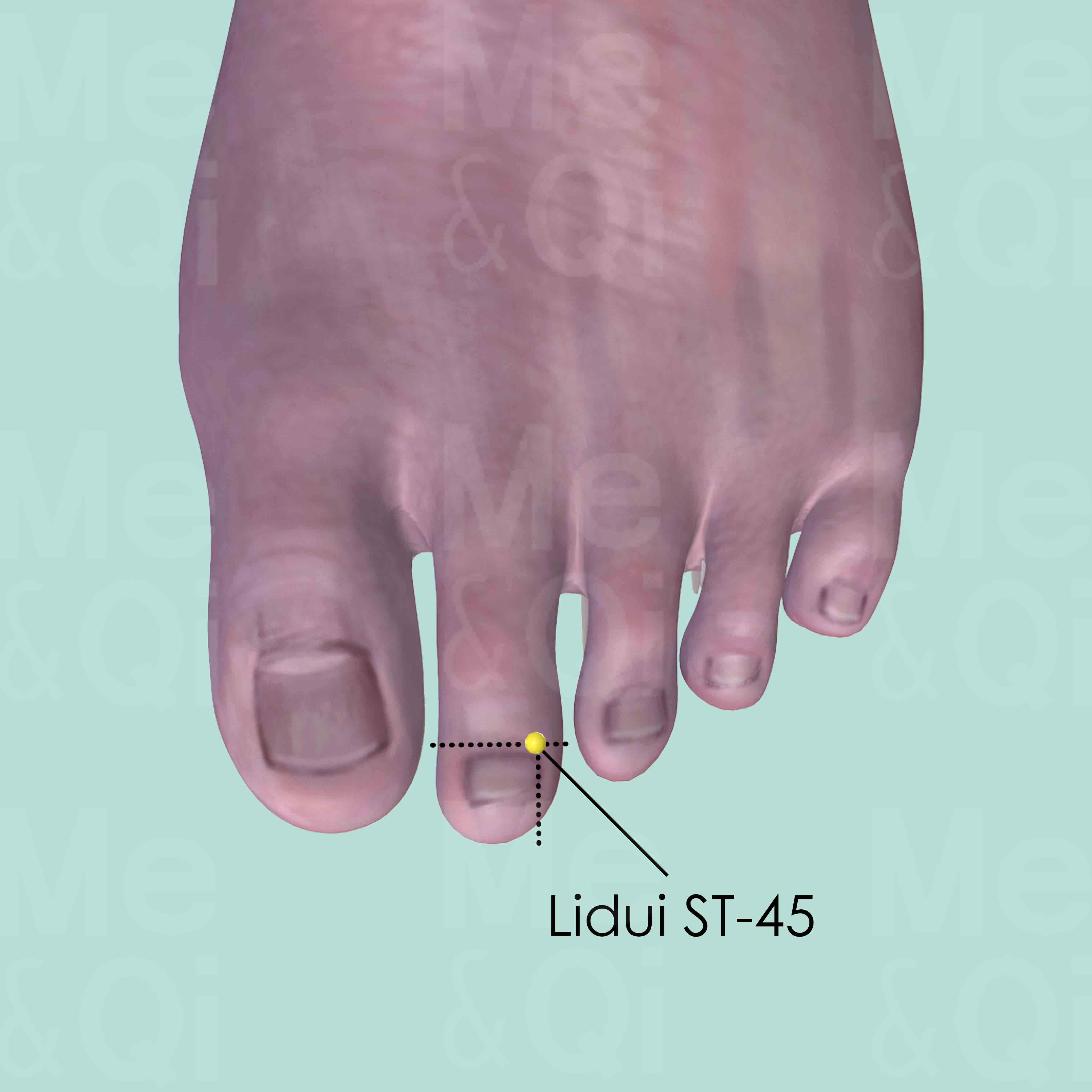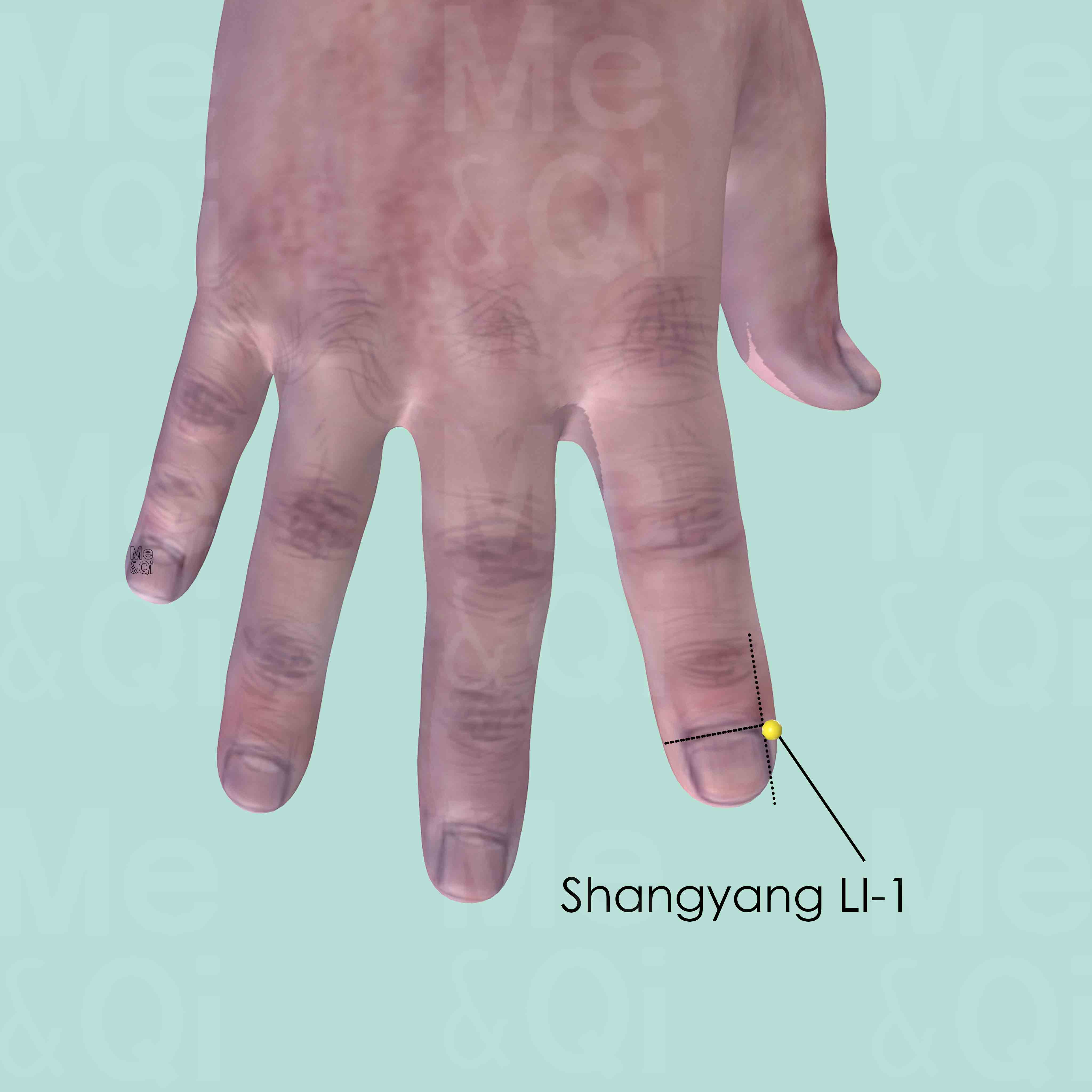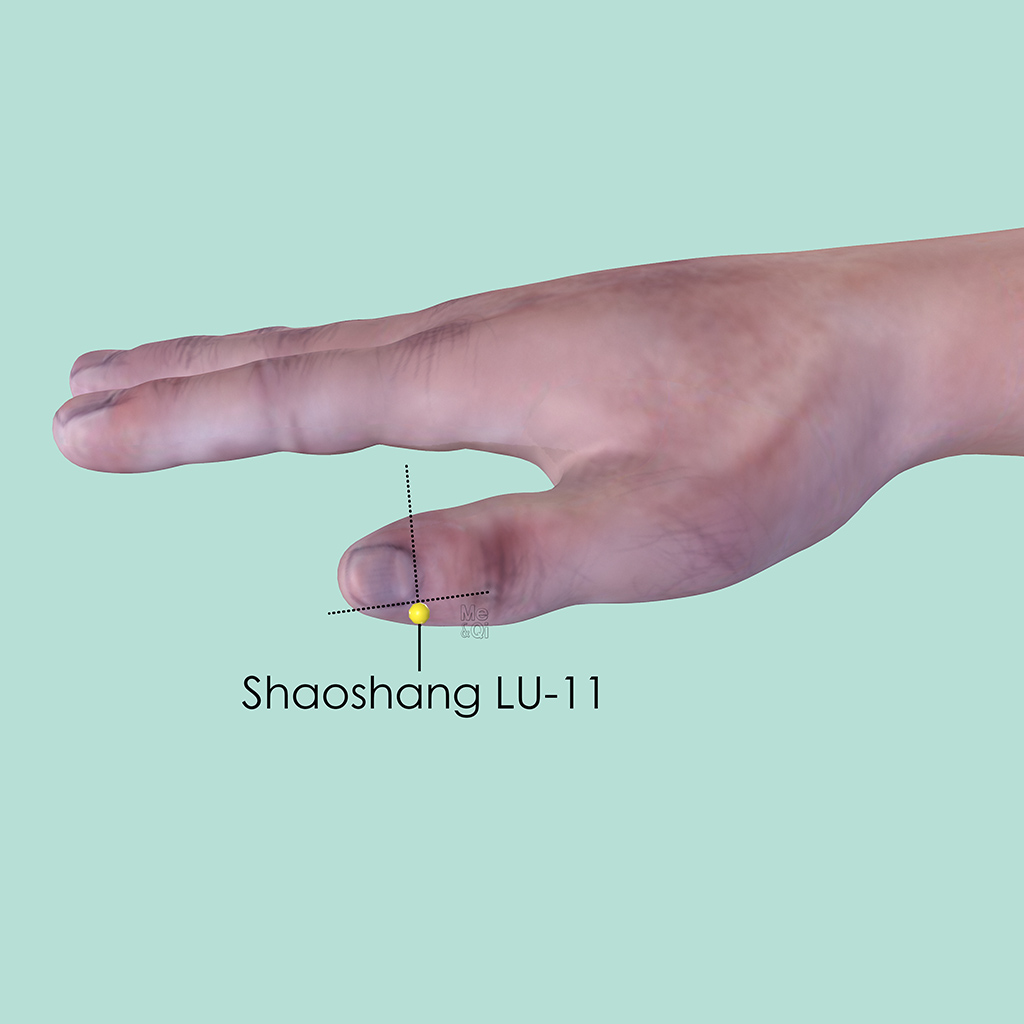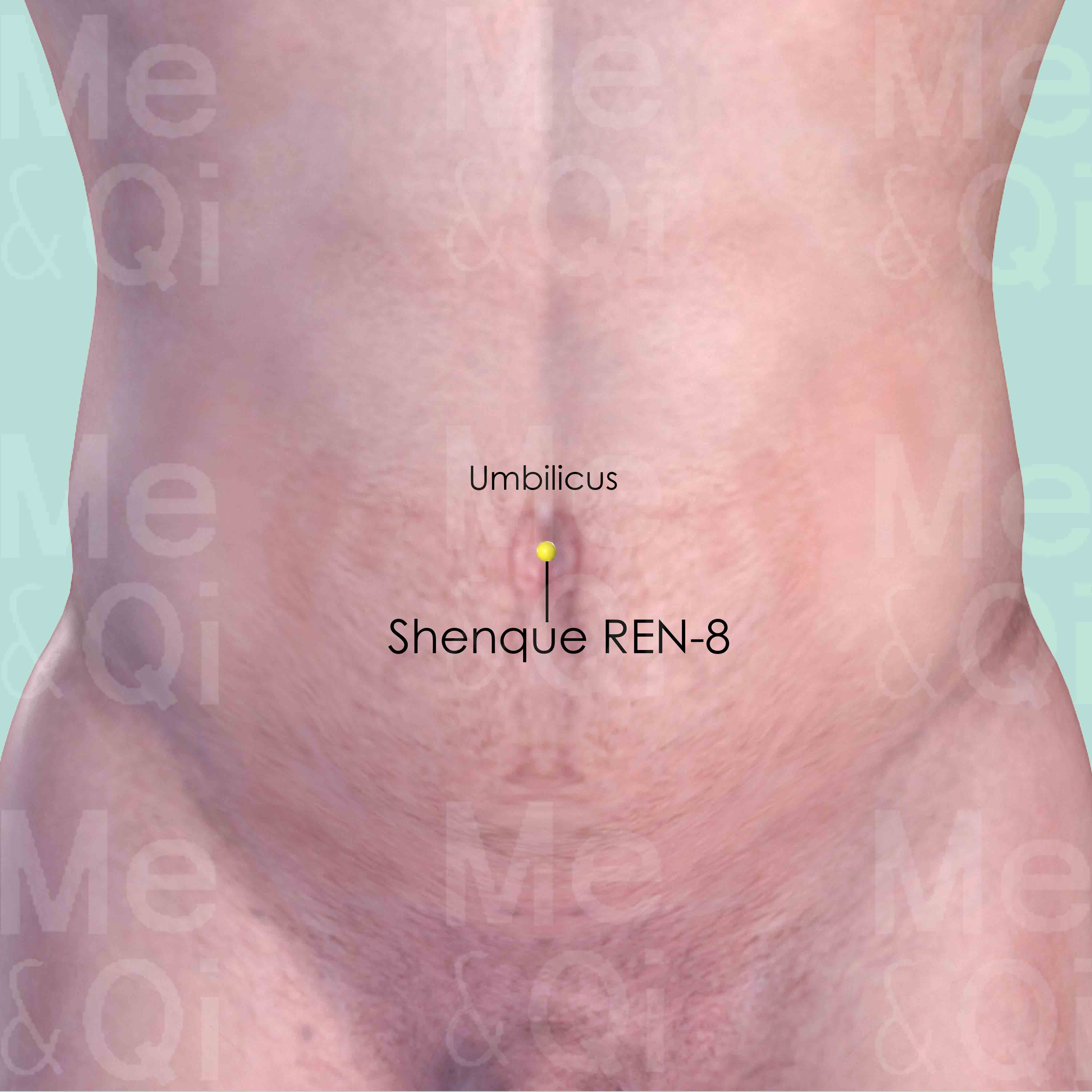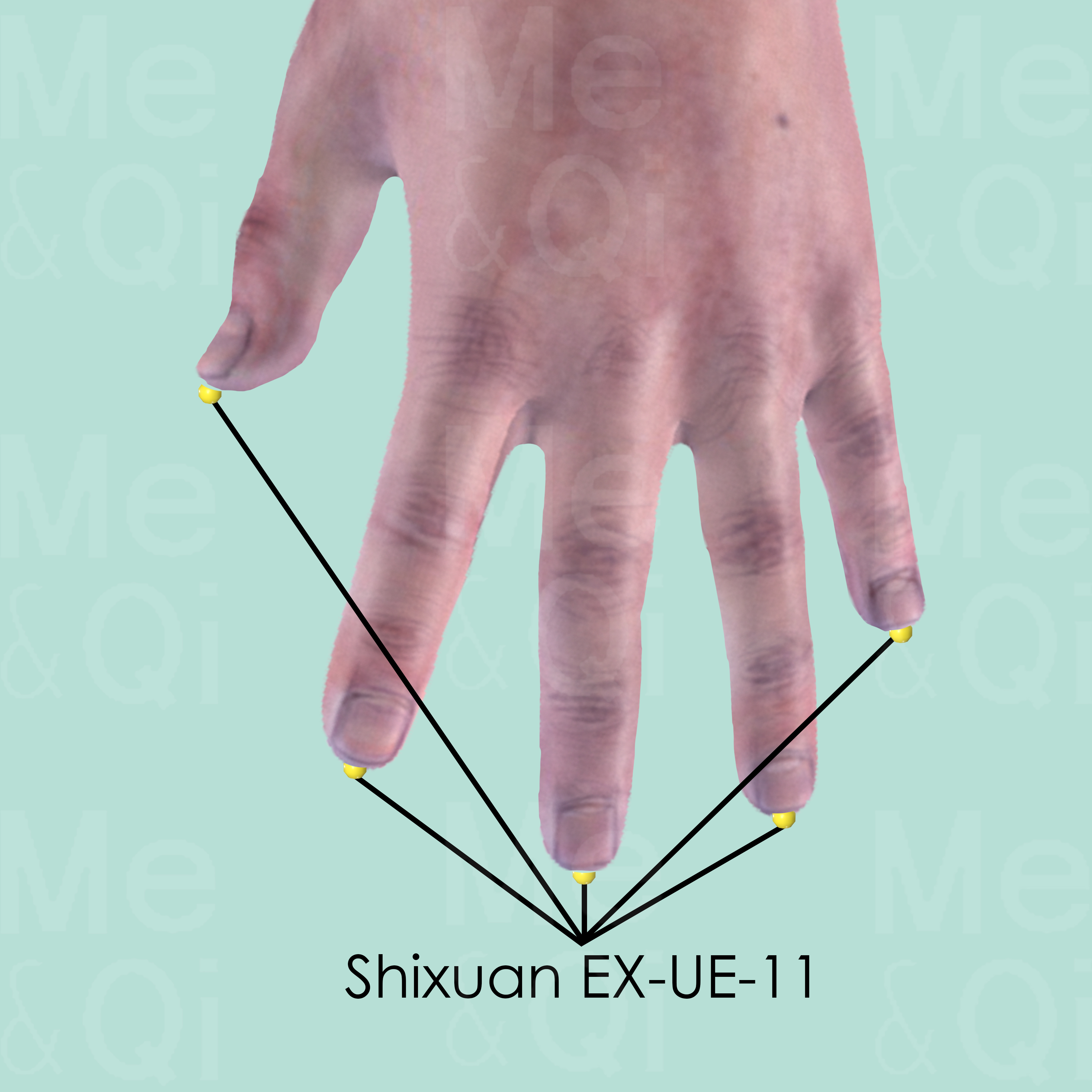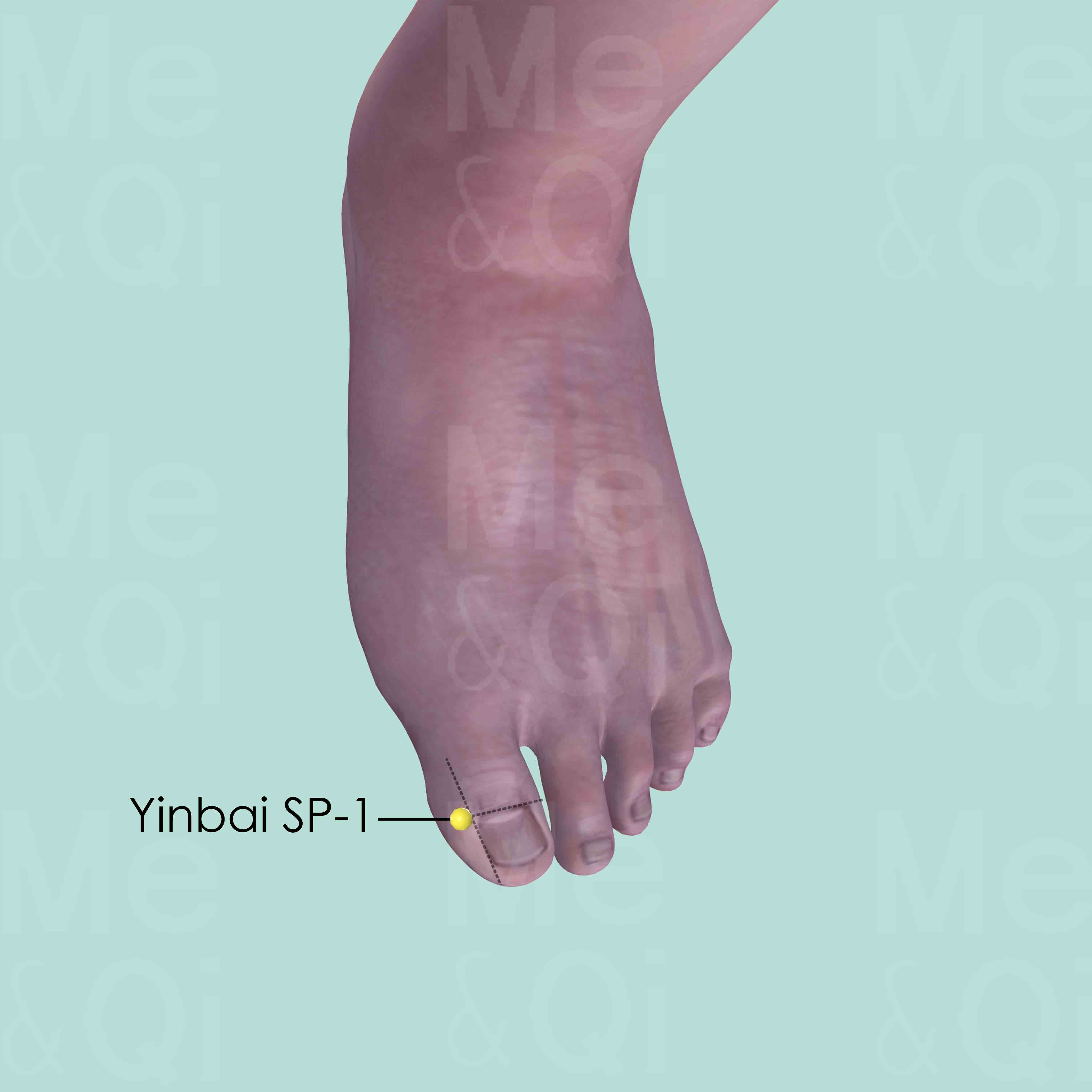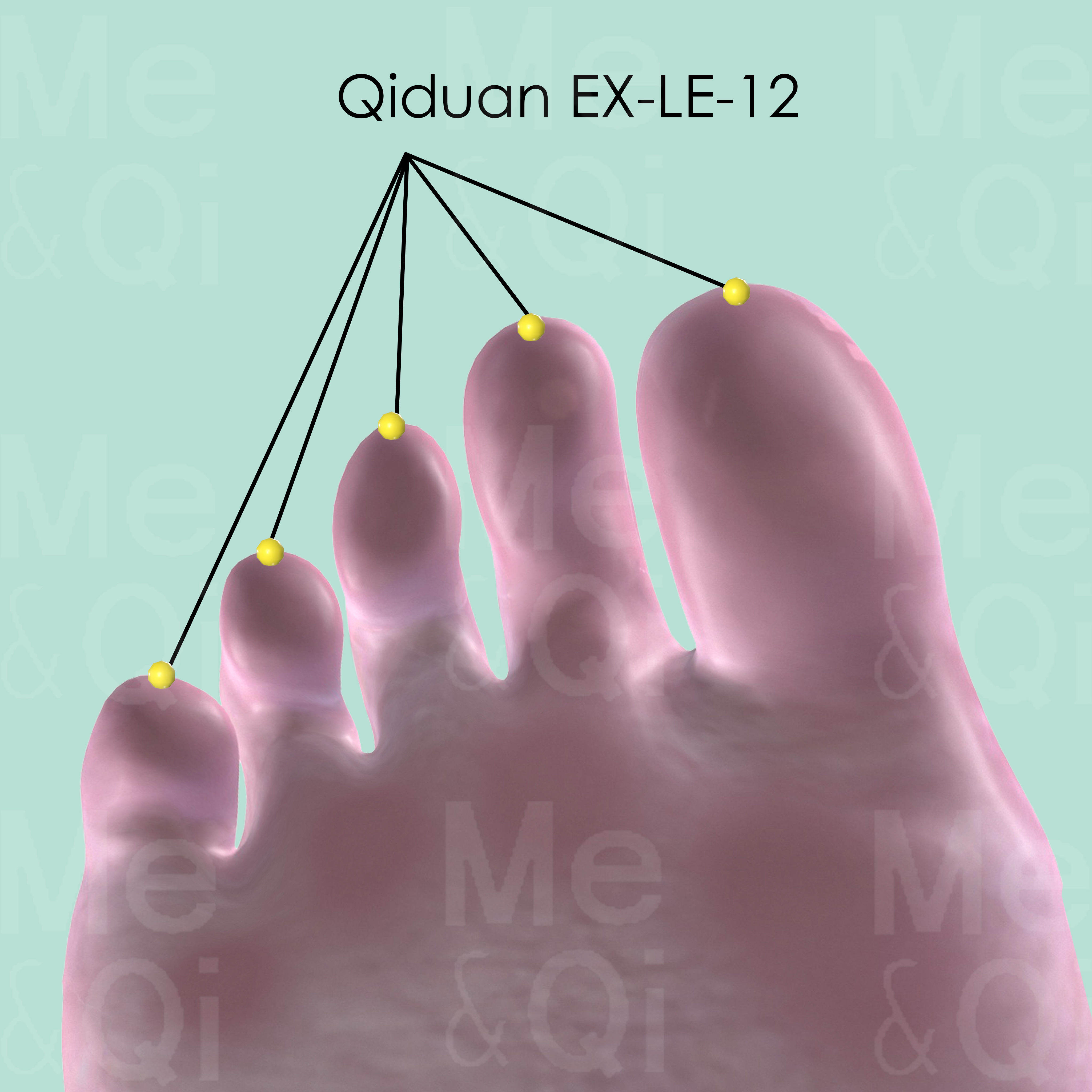Loss Of Consciousnessaccording to TCM
Symptom family: Loss of Consciousness
What is Loss of Consciousness?
Loss of consciousness, commonly referred to as fainting or blacking out, is a sudden and brief lapse in a person’s wakefulness and awareness. Medically, it's defined as a state where individuals are unresponsive to external stimuli and their surroundings. This condition spans a spectrum from a brief moment of faintness to prolonged states of unconsciousness, like those seen in comatose patients. Understanding the underlying causes is vital as they can range from benign to life-threatening situations.
How does TCM view Loss of Consciousness?
Traditional Chinese Medicine (TCM) interprets loss of consciousness as an imbalance or interruption in the flow of Qi, the vital life force. TCM practitioners believe that consciousness is closely tied to the Heart and its spiritual aspect, the Shen.
A disruption in the balance of Yin and Yang, or the presence of pathogenic factors such as Phlegm or Heat, can disturb the Shen, leading to a loss of consciousness. Identifying the root cause, which can differ vastly from person to person, is a cornerstone of TCM diagnosis and treatment.
Root Causes of Loss Of Consciousness in TCM
In the TCM paradigm, loss of consciousness can result from multiple causes, each indicating a disharmony in body systems. Phlegm Misting the Heart is a common pattern where an accumulation of Phlegm veils the mind, leading to confusion and unconsciousness.
Another pattern, Heat invading the Pericardium, presents with high fever and restlessness, potentially culminating in a loss of consciousness. TCM treatments aim not just at symptom relief but at resolving the underlying disharmony causing the symptom.
Explore below more details about what might cause Loss of consciousness according to TCM.
- By Syndrome
- By Organ
- Mind Disturbance
- Phlegm
- Heat
- Qi Rebellion
- Wind
- Summer Heat
- View More Causes
- Pericardium
- Heart
- Liver
- Lung
- View More Organs
Mind Disturbance
In TCM "Shen" refers to the mind or spirit, and a Shen disturbance is a pattern of disharmony that affects the mental and emotional state. This concept reflects the TCM belief in the deep interconnectedness of mind and body. Symptoms of Shen disturbance can vary widely but often include anxiety, insomnia, restlessness, confusion, or in severe cases, hallucinations or delirium. These symptoms indicate an imbalance in the body's energies affecting the heart, which in TCM is not only the center of blood circulation but also the seat of the mind and consciousness. The root of Shen disturbance can be traced to various factors, including emotional stress, physical illness, or an imbalance in fundamental substances like Qi, Yin, or Yang.... see more
Mind Disturbance Patterns That Can Lead to Loss Of Consciousness
Common Symptoms: Incoherent Or Confused Speech Fever Irritability Restlessness Feeling Of Uneasiness Viral Encephalitis Meningitis Pertussis
| Pattern Name | Relevant Symptoms | Relevant Formulas |
|---|---|---|
| Phlegm Misting the Heart | Sudden blackouts, Unconsciousness, Confusion, Loss of consciousness, Hypersomnia, Incoherent or confused speech, Slurred speech, Aphasia, Noisy breathing, Vomit... see more | Wen Dan Tang | Di Tan Tang | Gun Tan Wan | Su He Xiang Wan |
| Heat invading the Pericardium | Impaired consciousness, Fever, Irritability, Restlessness, Feeling of uneasiness, Incoherent or confused speech, Loss of consciousness, Viral encephalitis, Meningitis, Pertussis, Measles induced pneumonia... see more | Niu Huang Qing Xin Wan |
Phlegm
In TCM "Phlegm" as a pattern of disharmony is a complex concept that extends beyond the physical manifestation of mucus. It represents a pathological factor that can disrupt the flow of Qi (vital energy) and blood, leading to various health issues. Phlegm in TCM is seen as a sticky, turbid substance arising from the body's inability to metabolize fluids properly, often due to a dysfunction of the spleen. It's not only associated with respiratory problems like cough and congestion but also with systemic issues. Symptoms can include a feeling of heaviness, mental cloudiness, dizziness, and in some cases, the formation of lumps or masses. Phlegm can even be "invisible," contributing to emotional disturbances like depression or stress. ... see more
Phlegm Patterns That Can Lead to Loss Of Consciousness
Common Symptoms: Coma Confusion Hypersomnia Incoherent Or Confused Speech Slurred Speech Aphasia Noisy Breathing Vomit
| Pattern Name | Relevant Symptoms | Relevant Formulas |
|---|---|---|
| Phlegm Misting the Heart | Sudden blackouts, Unconsciousness, Confusion, Loss of consciousness, Hypersomnia, Incoherent or confused speech, Slurred speech, Aphasia, Noisy breathing, Vomit... see more | Wen Dan Tang | Di Tan Tang | Gun Tan Wan | Su He Xiang Wan |
| Turbid Phlegm Blocks Orifices | Loss of consciousness, Coma, Clenching of teeth, Shortness of breath, Pale face, Copious sputum, Drooling... see more | Tong Guan San |
Heat
In TCM "Heat" signifies an excess of Yang energy, leading to an imbalance where heat predominates over the body's cool Yin aspects. This condition is metaphorically akin to an internal over-heating. Symptoms indicative of Heat can include feelings of warmth, fever, sweating, irritability, red face, thirst with a preference for cold drinks, and a rapid pulse. The tongue may appear red with a yellow coating. Unlike the common interpretation of heat in terms of temperature, in TCM, it represents a state of hyperactivity or inflammation in the body.... see more
Heat Patterns That Can Lead to Loss Of Consciousness
Common Symptoms: Fever Irritability Restlessness Feeling Of Uneasiness Incoherent Or Confused Speech Viral Encephalitis Meningitis Pertussis
| Pattern Name | Relevant Symptoms | Relevant Formulas |
|---|---|---|
| Heat victorious stirring Wind | Fainting, High fever, Loss of consciousness, Limb twitching, Convulsions, Stiff neck, Opisthotonos, Eyeballs turning up, Clenching of teeth... see more | Ling Jiao Gou Teng Tang |
| Heat invading the Pericardium | Impaired consciousness, Fever, Irritability, Restlessness, Feeling of uneasiness, Incoherent or confused speech, Loss of consciousness, Viral encephalitis, Meningitis, Pertussis, Measles induced pneumonia... see more | Niu Huang Qing Xin Wan |
Qi Rebellion
Rebellious Qi in TCM is a bit like having a rebel inside your body. Qi, which is the vital energy flowing through your body, is supposed to move in certain directions to keep everything in balance and working well. But with Rebellious Qi, this energy decides to go the opposite way. Think of it like a river flowing upstream instead of downstream. This can cause various issues like heartburn, coughing, or even headaches. It's as if the body's natural flow is disrupted, creating a kind of internal chaos. TCM focuses on correcting this flow, restoring order and balance.... see more
Qi Rebellion Patterns That Can Lead to Loss Of Consciousness
| Pattern Name | Relevant Symptoms | Relevant Formulas |
|---|---|---|
| Rebellious Lung Qi | Fainting, Coughing, Asthma, Nausea, Vomit, Dizziness, Headaches, Loss of consciousness | Su Zi Jiang Qi Tang | Jin Fei Cao San |
Wind
In TCM "Wind" is a concept that represents a pattern of disharmony, often characterized by its sudden and unpredictable nature, much like a gusty wind changing direction without warning. This pattern is associated with symptoms that come and go quickly or move around the body, such as itching, tremors, or even certain types of pain. Wind is considered to be a primary cause of illnesses that have these rapidly changing characteristics. In TCM, external Wind often refers to illnesses that start suddenly, like the common cold, believed to be caused by external pathogenic factors like climatic changes. On the other hand, internal Wind can be linked to internal imbalances and can manifest in conditions like dizziness or spasms. ... see more
Wind Patterns That Can Lead to Loss Of Consciousness
| Pattern Name | Relevant Symptoms | Relevant Formulas |
|---|---|---|
| Heat victorious stirring Wind | Fainting, High fever, Loss of consciousness, Limb twitching, Convulsions, Stiff neck, Opisthotonos, Eyeballs turning up, Clenching of teeth... see more | Ling Jiao Gou Teng Tang |
Summer Heat
"Summer-Heat" in TCM is a unique concept that refers to a pattern of disharmony often associated with the hot summer months. Imagine the intense heat of summer stressing your body, like being in a sweltering, humid environment for too long. This can lead to symptoms like feeling overheated, excessive sweating, a feeling of irritation, and sometimes even nausea or dizziness. In TCM, this condition is thought to arise from the external environment's heat affecting the body's internal balance. It's similar to how we might feel uncomfortable and out of sorts on a very hot day. ... see more
Summer Heat Patterns That Can Lead to Loss Of Consciousness
| Pattern Name | Relevant Symptoms | Relevant Formulas |
|---|---|---|
| Summer-Heat entering the Lesser Yin and Terminal Yin warps | Clouding of consciousness, Wasting, Thirst, Cardiac burning sensation, Irritability, Restlessness, Paralysis, Loss of consciousness, Mental disturbances, Muscle numbness, Muscle spasm... see more | Wu Shi Lian Mei Tang |
Pericardium
In TCM the Pericardium is more than a physical membrane protecting the heart; it's considered an organ system that acts as the "Heart's protector." It plays a crucial role in safeguarding the heart from external pathogenic factors and emotional disturbances. The Pericardium is also involved in regulating blood circulation and influencing emotional well-being, especially in terms of relationships and intimacy. When the Pericardium malfunctions or is imbalanced in TCM, it can lead to symptoms that mirror heart issues, such as chest pain or palpitations, but often with an emotional component like difficulty in forming emotional connections or excessive vulnerability to external stressors. Additionally, a disturbed Pericardium can result in sleep disturbances, anxiety, and in severe cases, mental confusion, reflecting its integral role in both physical heart protection and emotional balance.... see more
Pericardium Patterns That Can Lead to Loss Of Consciousness
| Pattern Name | Relevant Symptoms | Relevant Formulas |
|---|---|---|
| Heat invading the Pericardium | Impaired consciousness, Fever, Irritability, Restlessness, Feeling of uneasiness, Incoherent or confused speech, Loss of consciousness, Viral encephalitis, Meningitis, Pertussis, Measles induced pneumonia... see more | Niu Huang Qing Xin Wan |
Heart
In TCM the Heart is considered the "emperor" of all organs, primarily responsible for governing Blood and housing the mind, known as "Shen." It plays a crucial role in maintaining mental-emotional equilibrium and controlling the circulation of Qi and blood throughout the body. When the Heart is imbalanced or malfunctions in TCM, it can lead to a range of issues like heart palpitations, insomnia, dream-disturbed sleep, anxiety, and a flushed complexion. Emotional disturbances such as excessive joy or lack of joy are also seen as signs of Heart disharmony. These symptoms reflect not just physical heart conditions but also the state of one's Shen, indicating the interconnectedness of physical and emotional well-being in TCM.... see more
Heart Patterns That Can Lead to Loss Of Consciousness
| Pattern Name | Relevant Symptoms | Relevant Formulas |
|---|---|---|
| Phlegm Misting the Heart | Sudden blackouts, Unconsciousness, Confusion, Loss of consciousness, Hypersomnia, Incoherent or confused speech, Slurred speech, Aphasia, Noisy breathing, Vomit... see more | Wen Dan Tang | Di Tan Tang | Gun Tan Wan | Su He Xiang Wan |
Liver
In TCM the Liver is viewed as the organ responsible for the smooth flow of Qi, Blood, and emotions throughout the body. It plays a key role in regulating mood, storing blood, supporting digestion, and ensuring the health of tendons and eyes. When the Liver malfunctions or is imbalanced in TCM, it can lead to a range of issues such as irritability, mood swings, menstrual irregularities, eye problems, and muscular stiffness or pain. A malfunctioning Liver in TCM reflects not only physical disturbances but also emotional and mental disharmony, emphasizing the holistic approach of TCM in addressing health and wellness.... see more
Liver Patterns That Can Lead to Loss Of Consciousness
| Pattern Name | Relevant Symptoms | Relevant Formulas |
|---|---|---|
| Heat victorious stirring Wind | Fainting, High fever, Loss of consciousness, Limb twitching, Convulsions, Stiff neck, Opisthotonos, Eyeballs turning up, Clenching of teeth... see more | Ling Jiao Gou Teng Tang |
Lung
In TCM the Lungs are seen as the organ responsible for controlling Qi and respiration, as well as being a key part of the body's defensive system. They are thought to maintain the balance and flow of air and moisture, and are closely linked to the skin and hair. When the Lungs are imbalanced or malfunctioning in TCM, it can lead to respiratory issues like coughing or asthma, a weakened immune system, dry skin, and emotional disturbances such as sadness or grief. These symptoms are believed to arise from disruptions in the Lungs' ability to regulate Qi and protect the body, highlighting their central role in maintaining overall health and well-being.... see more
Lung Patterns That Can Lead to Loss Of Consciousness
| Pattern Name | Relevant Symptoms | Relevant Formulas |
|---|---|---|
| Rebellious Lung Qi | Fainting, Coughing, Asthma, Nausea, Vomit, Dizziness, Headaches, Loss of consciousness | Su Zi Jiang Qi Tang | Jin Fei Cao San |
TCM Herbal Formulas for Loss Of Consciousness
The herbal formula Wen Dan Tang is often prescribed when Phlegm Misting the Heart is diagnosed, as it contains ingredients like Crow-Dipper Rhizomes to clear the phlegm. In cases of Heat invading the Pericardium, Niu Huang Qing Xin Wan, with Ox Gallstones, may be utilized to cool the Heat and restore consciousness.
The herbs chosen reflect the individual’s specific pattern of disharmony, ensuring a targeted approach to reinstate the balanced flow of Qi and awaken the mind.
Explore below some TCM herbal formulas used to address loss of consciousness, organized by cause and by formula type.
- By Cause
- By Formula Type
- Mind Disturbance
- Phlegm
- Heat
- Qi Rebellion
- Wind
- Summer Heat
- View More Causes
- Formulas that warm and open sensory orifices
- Formulas that clear heat and open sensory orifices
- Formulas that dry dampness and transform phlegm
- Formulas that dispel phlegm
- Formulas that clear heat and transform phlegm
- Formulas that pacify and extinguish internal wind
- Formulas for a rebellious qi
- Formulas that clear wind-Cold
- Formulas that dispel summer-Heat and preserve body fluids
Top Formula for Mind Disturbance:
Niu Huang Qing Xin Wan
Suitable for Mind Disturbance patterns that may cause loss of consciousness, such as Heat invading the Pericardium
Learn moreAll Formulas Recommended for Loss Of Consciousness Caused by Mind Disturbance
| Formula | Patterns Suitable For |
|---|---|
| Niu Huang Qing Xin Wan | Heat invading the Pericardium |
| Wen Dan Tang | Phlegm Misting the Heart |
| Di Tan Tang | Phlegm Misting the Heart |
| Gun Tan Wan | Phlegm Misting the Heart |
| Su He Xiang Wan | Phlegm Misting the Heart |
Top Formula for Phlegm:
Wen Dan Tang
Suitable for Phlegm patterns that may cause loss of consciousness, such as Phlegm Misting the Heart
Learn moreAll Formulas Recommended for Loss Of Consciousness Caused by Phlegm
| Formula | Patterns Suitable For |
|---|---|
| Wen Dan Tang | Phlegm Misting the Heart |
| Di Tan Tang | Phlegm Misting the Heart |
| Gun Tan Wan | Phlegm Misting the Heart |
| Su He Xiang Wan | Phlegm Misting the Heart |
| Tong Guan San | Turbid Phlegm Blocks Orifices |
Top Formula for Heat:
Niu Huang Qing Xin Wan
Suitable for Heat patterns that may cause loss of consciousness, such as Heat invading the Pericardium
Learn moreAll Formulas Recommended for Loss Of Consciousness Caused by Heat
| Formula | Patterns Suitable For |
|---|---|
| Niu Huang Qing Xin Wan | Heat invading the Pericardium |
| Ling Jiao Gou Teng Tang | Heat victorious stirring Wind |
Top Formula for Qi Rebellion:
Su Zi Jiang Qi Tang
Suitable for Qi Rebellion patterns that may cause loss of consciousness, such as Rebellious Lung Qi
Learn moreAll Formulas Recommended for Loss Of Consciousness Caused by Qi Rebellion
| Formula | Patterns Suitable For |
|---|---|
| Su Zi Jiang Qi Tang | Rebellious Lung Qi |
| Jin Fei Cao San | Rebellious Lung Qi |
Top Formula for Wind:
Ling Jiao Gou Teng Tang
Suitable for Wind patterns that may cause loss of consciousness, such as Heat victorious stirring Wind
Learn moreTop Formula for Summer Heat:
Wu Shi Lian Mei Tang
Suitable for Summer Heat patterns that may cause loss of consciousness, such as Summer-Heat entering the Lesser Yin and Terminal Yin warps
Learn moreFormulas that warm and open sensory orifices
These formulas are suitable for some loss of consciousness-causing patterns like Phlegm Misting the Heart.
One such formula is Su He Xiang Wan, with styrax resin as a key herb.
Other formulas of this category are listed in the table below.
All "formulas that warm and open sensory orifices" recommended for loss of consciousness
| Formula | Patterns Suitable For (if applicable) |
|---|---|
| Su He Xiang Wan | Phlegm Misting the Heart |
| Tong Guan San | Turbid Phlegm Blocks Orifices |
Formulas that clear Heat and open sensory orifices
These formulas are suitable for some loss of consciousness-causing patterns like Heat invading the Pericardium.
One such formula is Niu Huang Qing Xin Wan, with ox gallstone as a key herb.
Formulas that dry Dampness and transform Phlegm
These formulas are suitable for some loss of consciousness-causing patterns like Phlegm Misting the Heart.
One such formula is Wen Dan Tang, with crow-dipper rhizome as a key herb.
Formulas that dispel Phlegm
These formulas are suitable for some loss of consciousness-causing patterns like Phlegm Misting the Heart.
One such formula is Di Tan Tang, with arisaema as a key herb.
Formulas that clear Heat and transform Phlegm
These formulas are suitable for some loss of consciousness-causing patterns like Phlegm Misting the Heart.
One such formula is Gun Tan Wan, with chlorite schist as a key herb.
Formulas that pacify and extinguish Internal Wind
These formulas are suitable for some loss of consciousness-causing patterns like Heat victorious stirring Wind.
One such formula is Ling Jiao Gou Teng Tang, with saiga antelope's horns as a key herb.
Formulas for a rebellious Qi
These formulas are suitable for some loss of consciousness-causing patterns like Rebellious Lung Qi.
One such formula is Su Zi Jiang Qi Tang, with perilla seeds as a key herb.
Formulas that clear Wind-Cold
These formulas are suitable for some loss of consciousness-causing patterns like Rebellious Lung Qi.
One such formula is Jin Fei Cao San, with inula flower as a key herb.
Formulas that dispel Summer-Heat and preserve Body Fluids
These formulas are suitable for some loss of consciousness-causing patterns like Summer-Heat entering the Lesser Yin and Terminal Yin warps.
One such formula is Wu Shi Lian Mei Tang, with goldthread rhizome as a key herb.
Acupoints for Loss Of Consciousness
TCM employs various acupoints to treat loss of consciousness, depending on the identified pattern of disharmony. Baihui DU-20 is a prominent point used to expel internal Wind and regulate the Mind, while Renzhong DU-26 is renowned for its effectiveness in restoring consciousness.
Acupoints like Laogong P-8 are selected to clear Heart Fire when excess Heat disturbs mental clarity. In TCM, stimulating these acupoints is believed to harmonize the disrupted energies, aiding in the recovery of consciousness.
Explore below some acupoints used to address loss of consciousness, organized by meridian.
- By Meridian
- Governing Vessel
- Pericardium Channel
- Bladder Channel
- Liver Channel
- Stomach Channel
- Large Intestine Channel
- Heart Channel
- Lung Channel
- Small Intestine Channel
- Directing Vessel
- Extra Points: Upper Extremities (EX-UE)
- Gall Bladder Channel
- Spleen Channel
- Kidney Channel
- Extra Points: Lower Extremities (EX-LE)
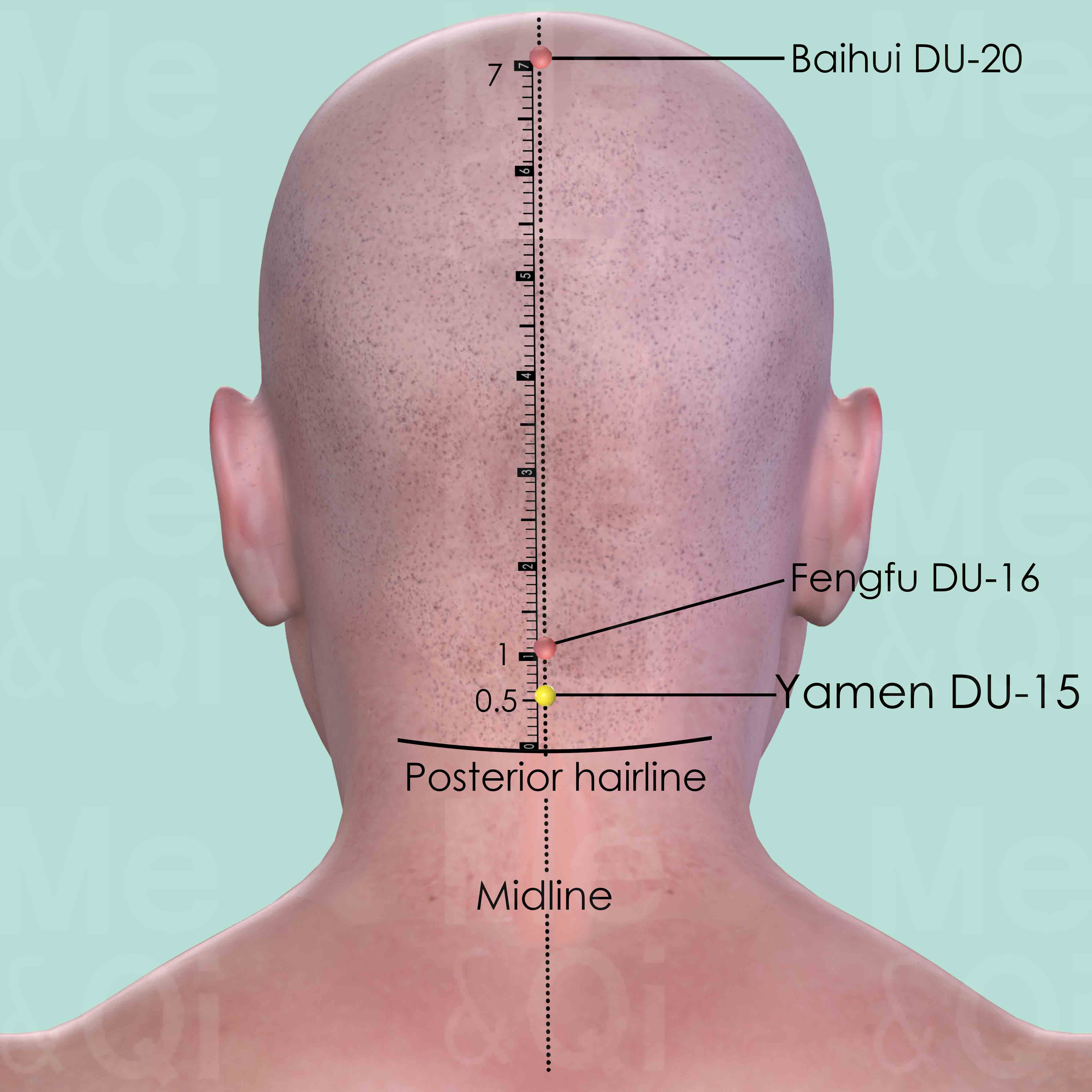
Yamen DU-15
On the back of the neck, 0.5 cun directly above the midpoint of the posterior hairline, below the spinous process of 1st cervical vertebra (C1).
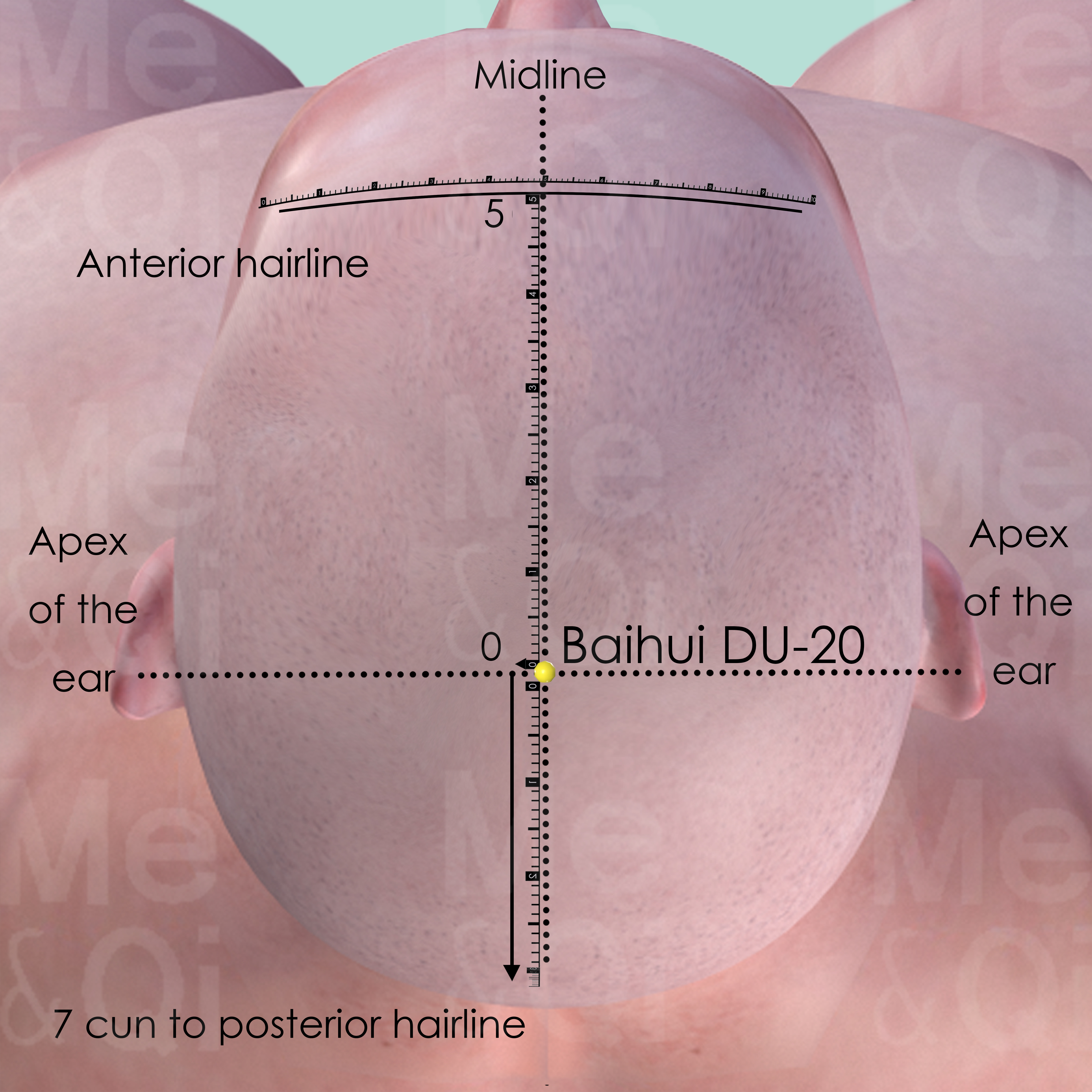
Baihui DU-20
At the vertex, at the junction of a line connecting the apex of the ears and the midline, in the depression 7 cun above the posterior hairline and 5 cun behind the anterior hairline.
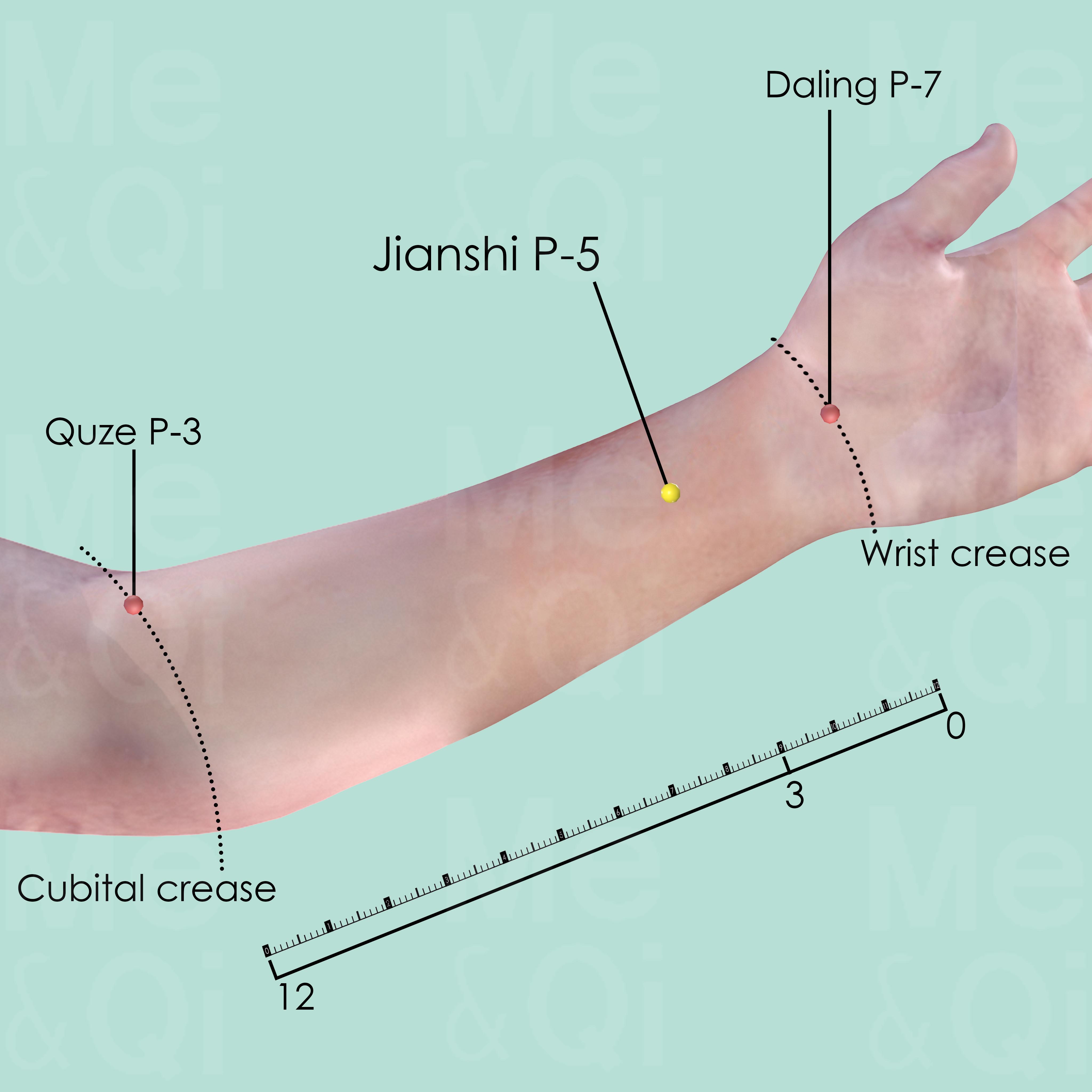
Jianshi P-5
3 cun above the transverse crease of the wrist, between the tendons of palmaris longus and flexor carpi radialis muscle.
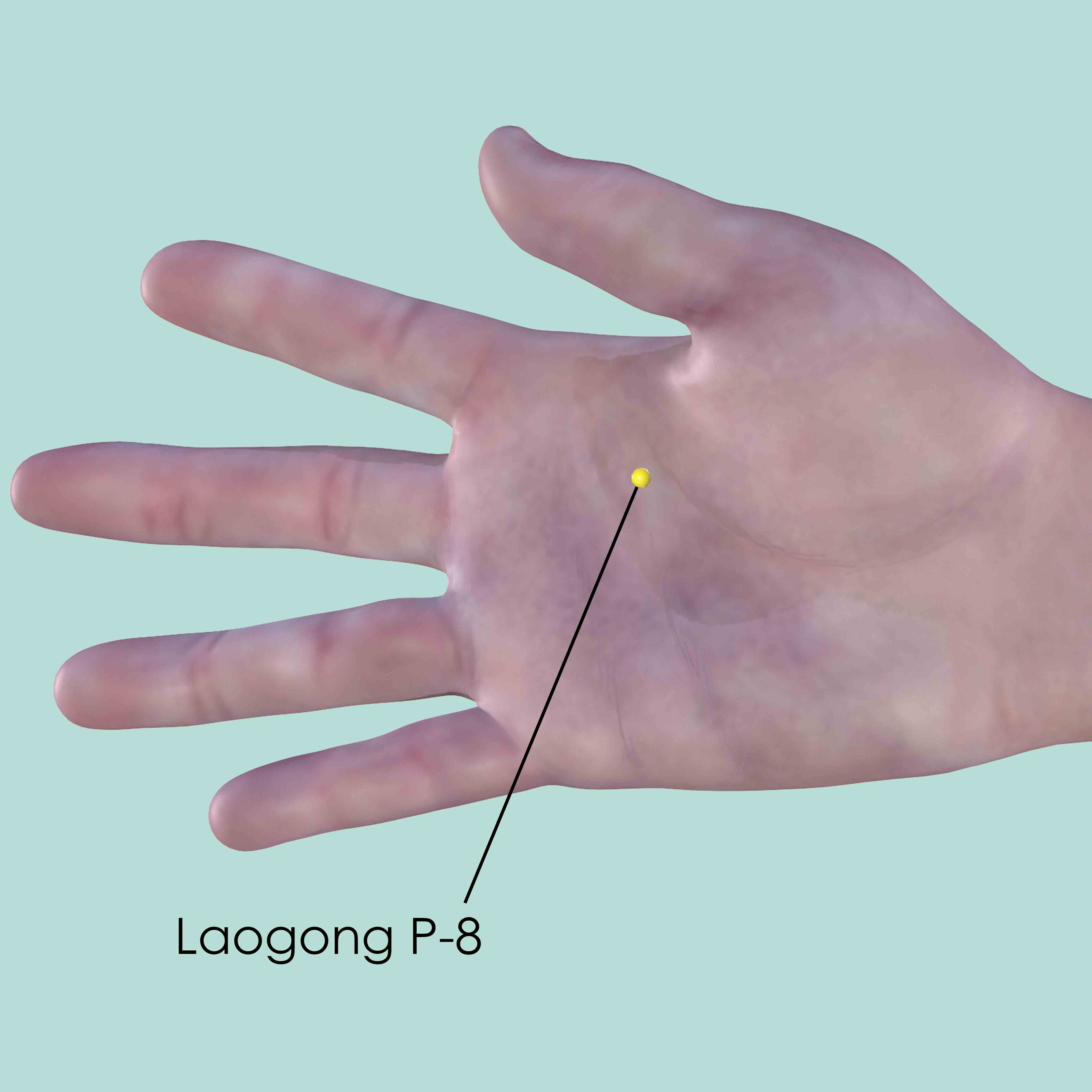
Laogong P-8
In the center of the palm, between the 2nd and the 3rd metacarpal bones, proximal to the metacarpophalangeal joint.
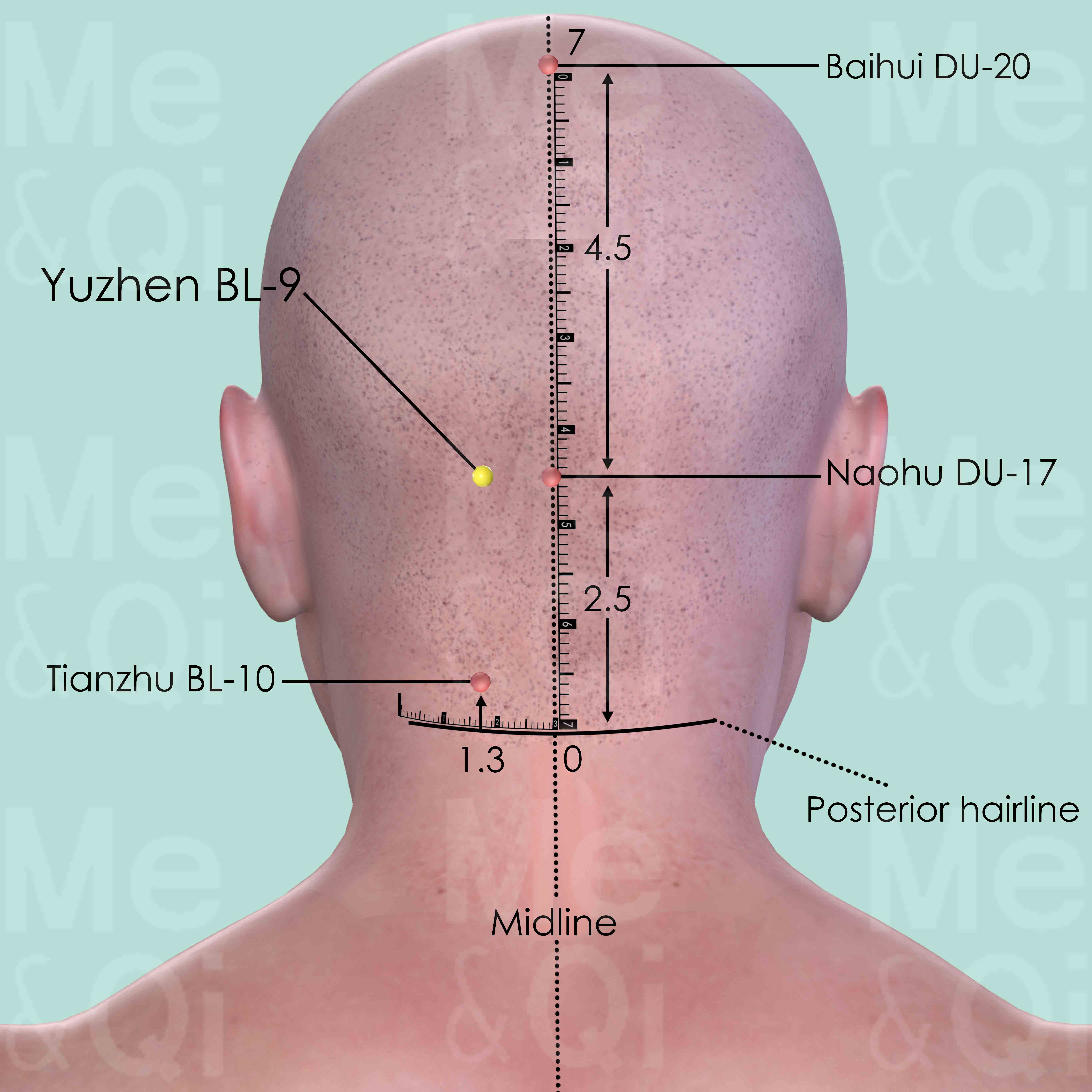
Yuzhen BL-9
First identify Naohu DU-17 which is on the superior border of the external occipital protuberance. Yuzhen BL-9 is 1.3 cun lateral to Naohu DU-17.
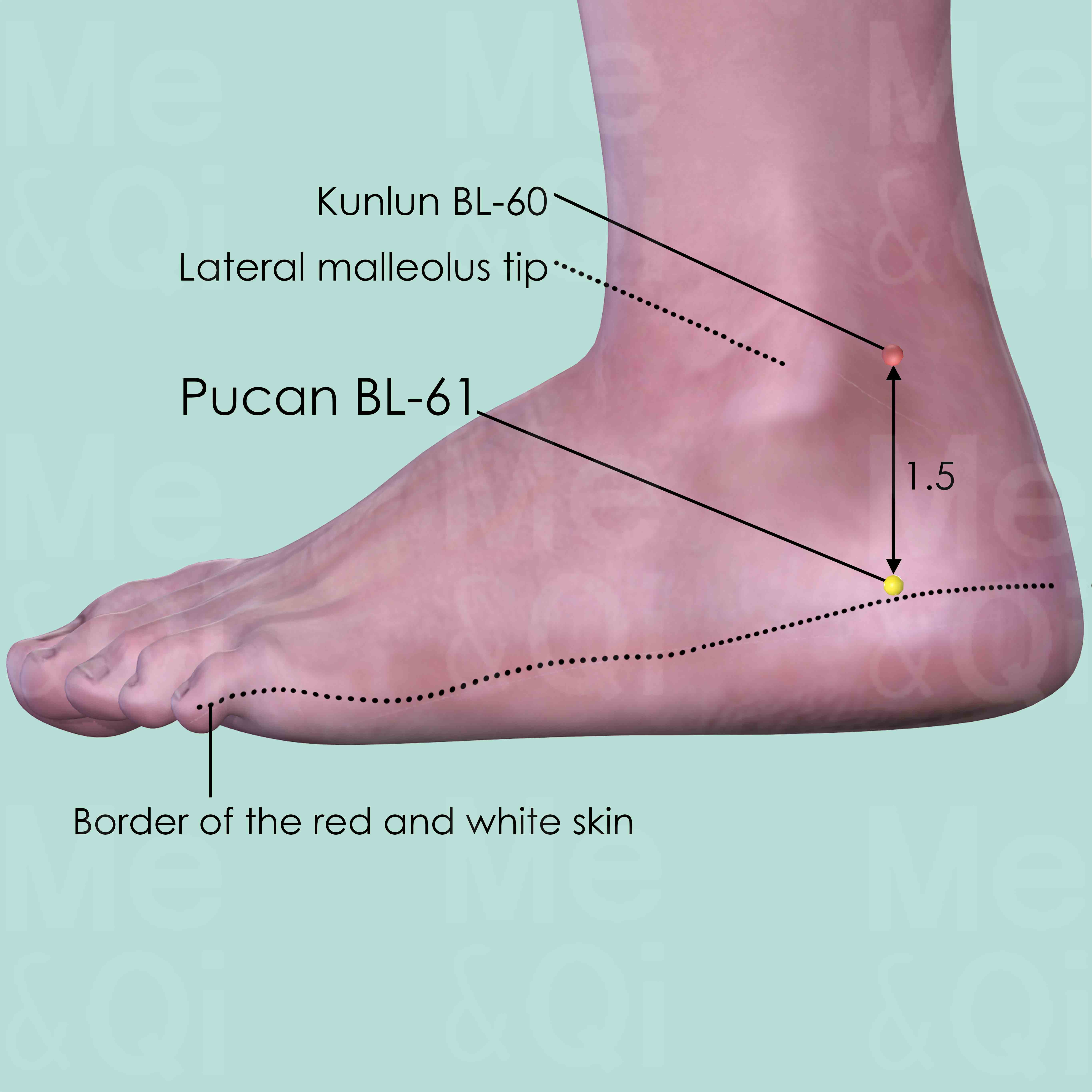
Pucan BL-61
Posterior and inferior to the external malleolus, directly below Kunlun BL-60, in the depression of the calcaneum at the junction of the red and white skin.
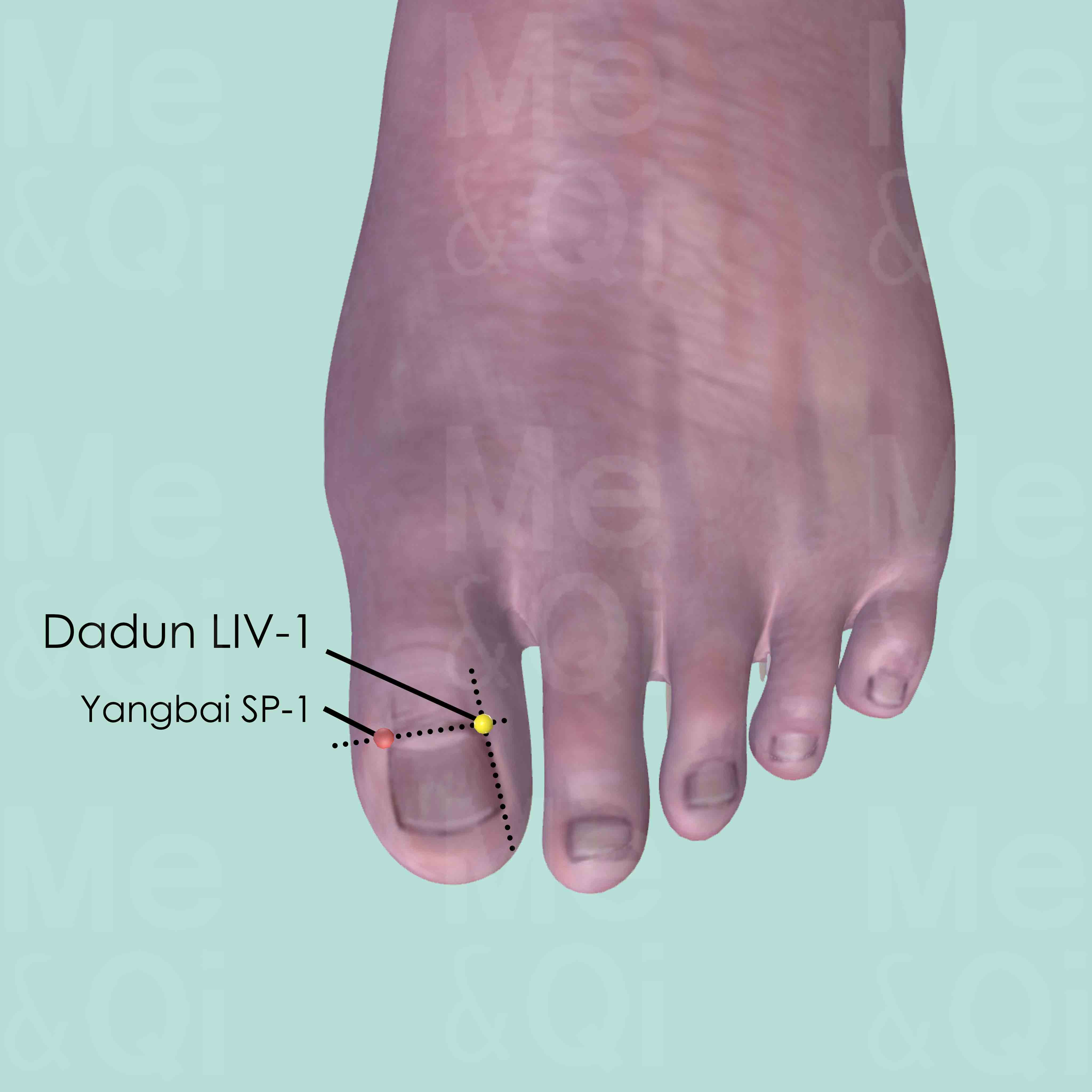
Dadun LIV-1
On the lateral side of the dorsum of the great toe terminal phalanx, between the lateral corner of the nail and interphalangeal joint.
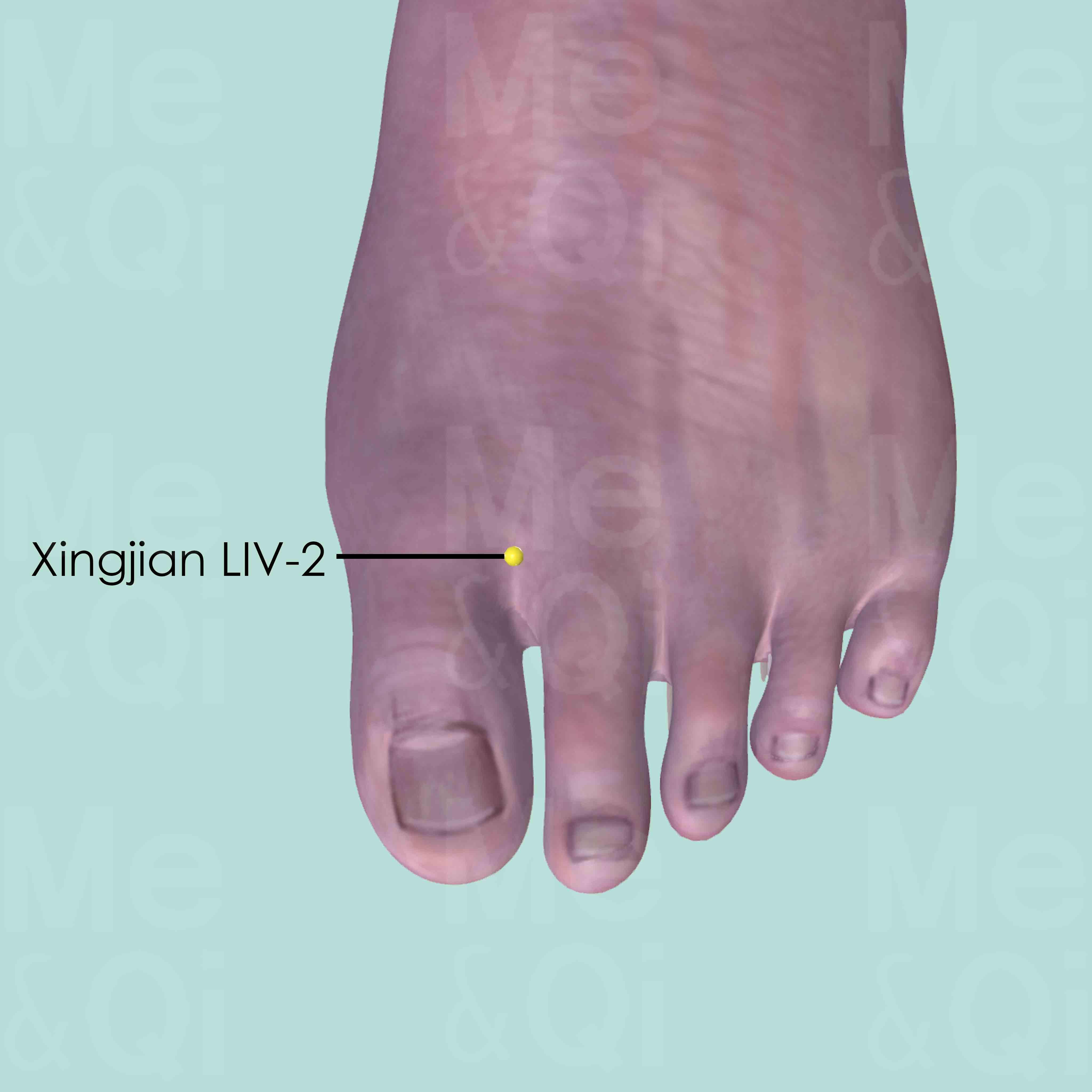
Xingjian LIV-2
Between the first and second toe, on the dorsum of the foot, 0.5 cun proximal to the interdigital fold.
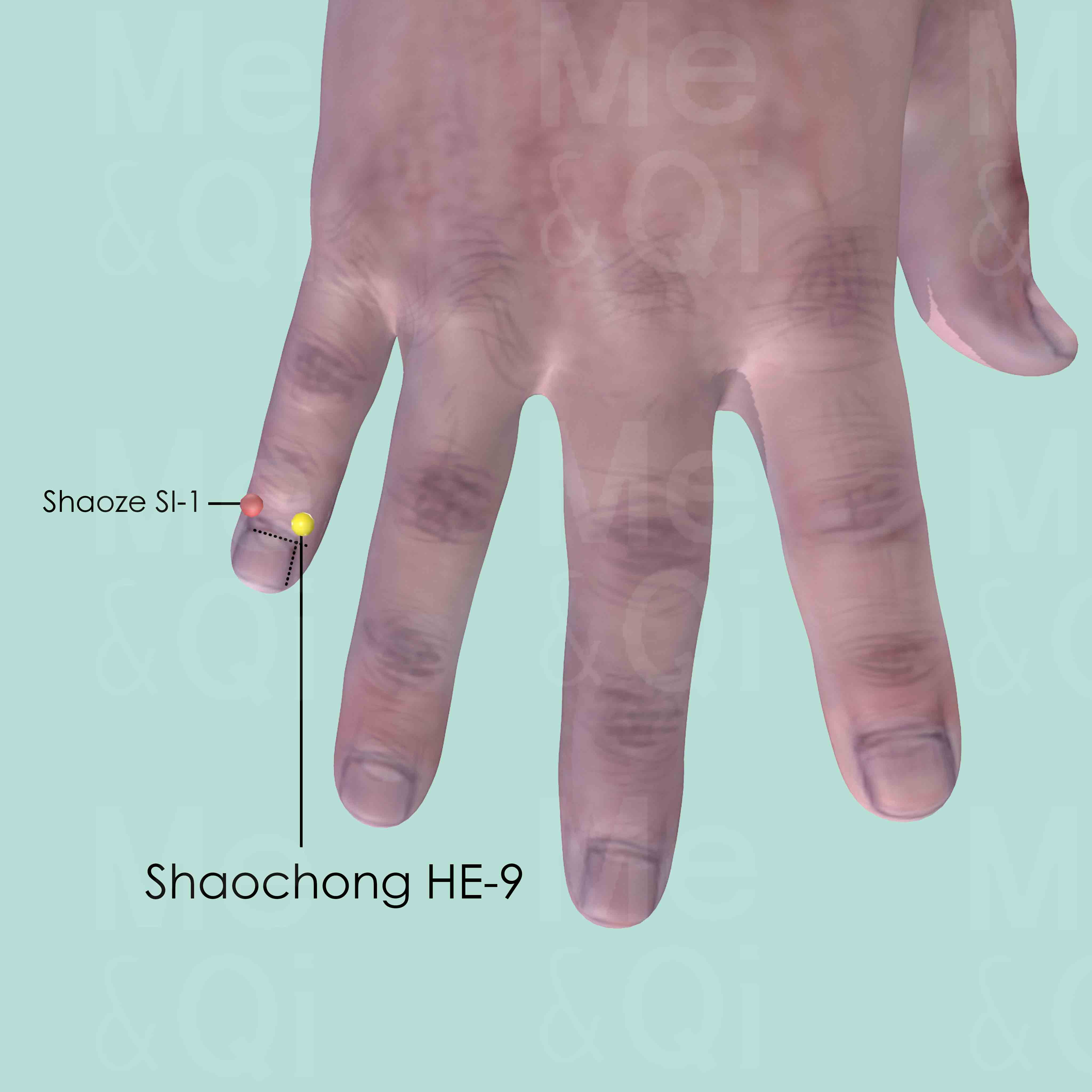
Shaochong HE-9
On the radial side of the little finger, about 0.1 cun posterior to the corner of the nail.

Shaoze SI-1
On the ulnar side of the little finger, about 0.1 cun posterior to the corner of the nail.
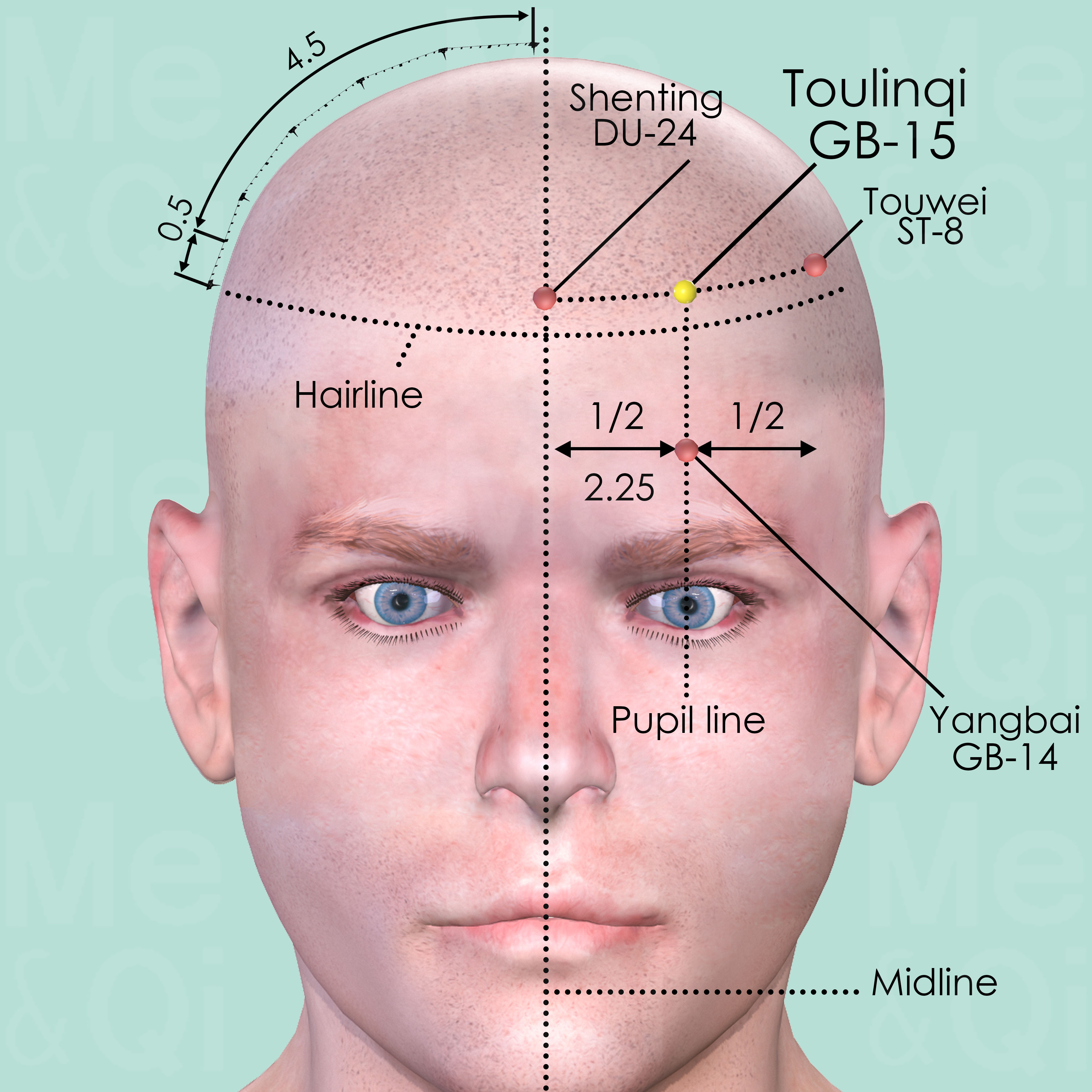
Toulinqi GB-15
Directly above Yangbai GB-14, on the pupil line, 0.5 cun within the hairline, midway between Shenting DU-24 and Touwei ST-8.
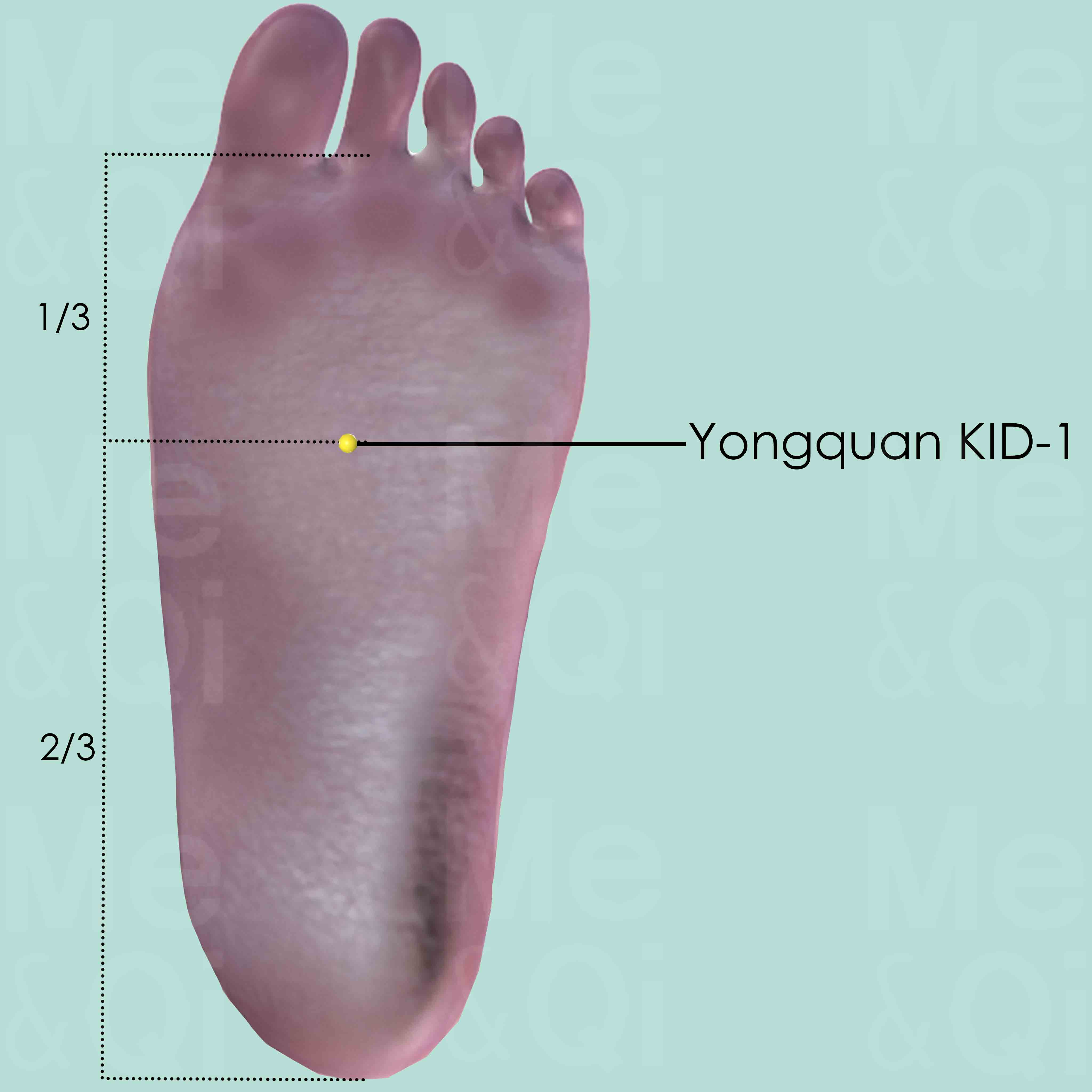
Yongquan KID-1
In the depression between the 2nd and 3rd metatarsal bones on the sole when the foot is in plantar flexion, approximately at the junction of the anterior and middle third of the sole.

